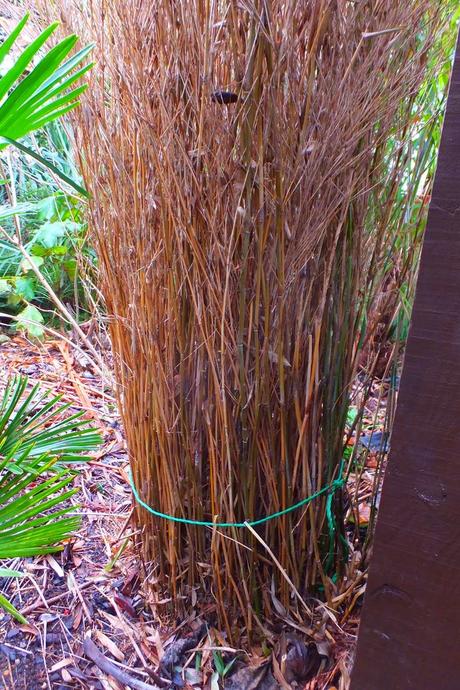No gardener likes to see plants die (well most of the time anyway, and there are exceptions of course).
Especially if that plant has a memory attached to it.
Like the bamboo below which was given to us by our much missed friend Kevin, gone so soon at the young age of thirty nine due to glioma, a few years ago. He gave it to us when we were still living in our first house which has a postage stamp size garden. When we moved to where we are now naturally it came with us. It was one of the first plants we planted out when we started developing our current garden and the plants significance increased even more when Kevin passed away.

There was no way it wouldn't be with us....that is until it decided it won't be with us anymore.
It started to go on decline last year when noticeable most of its culms have turned brown and very little new growth were replacing it. Perhaps it was just underfed and underwatered? But the plants surrounding it are just fine, if not doing even better.
But months before we noticed it going downhill it was preceded by two other bamboos of exactly the same type in different locations of the garden mysteriously dying as well. Hmmm....
Usually bamboos die when they are severely neglected (obviously) and when their hardiness are tested beyond their limits. Or if they go into full flowering mode (which is almost certainly lethal to clumping or pachymorphic bamboos). But generally bamboos are very tough and rather hard to kill, at least coming back from the ground when conditions are favourable again.
But three of the same kind of bamboos in different locations dying almost in succession is just odd. The bamboo that we are talking about were all labelled as Fargesia murielae 'Jumbo'.
This bamboo flowered profusely and almost simultaneously worldwide during the eighties but have produced viable seeds which carried on to become the new generation of this bamboo. Most temperate bamboos flower infrequently and only after many, many years (earning the common notion they only flower once every one hundred years, which is not true of course) and severely sets them back, if not killing them altogether. This was the case with this bamboo but with the new batch that has done well and propagated since now has that insurance that it is unlikely to flower again for a very long time. Division is far too slow to propagate such a well performing bamboo. Tissue culture was much quicker.
But there was no sign of flowering, it just went into terminal decline. Puzzled and mentioning it to a friend who is a bamboo collector himself, he said there were several reports elsewhere of this phenomenon happening to the same bamboo recently, and funny enough including one of his!

It seems we all bought ours at around the same time and our consensus was it is likely a 'bad batch of tissue cultured plants only rearing it's ugly head now'. Now I don't know much about the intricate science of tissue cultured plants to make definitive comments about it here but I am aware that it can produce erratic results later on. I even remember a discussion many years ago about making sure we all bought a Phyllostachys nigra that came from a division of a known good plant. Rather than tissue cultured ones which apparently was very inferior in quality (not producing big culms at all).
Back to this bamboo, despite it's meaningful association and significance we have no choice but to dig it up and replace it with something else. It's a shame to lose and let go of a gift but photos and memories will always be there.
And besides, it's best to remember someone who are no longer with us with something that is alive rather than dead.
I'm sure you'll agree.
Mark :-)

